Light eMTBs aren’t just for ambitious trail riders and can suit tourers and everyday riders too. Orbea know this and take a price-conscious approach with the brand-new Rise H. We’ve already tested the new Orbea Rise H10 with its aluminium frame, 60 Nm torque and internal 540 Wh battery, and tell you what it’s capable of and who it’s for.
With the Orbea Rise, the Spanish brand demonstrated at the end of 2020 that they have the know-how to blur the boundaries between mountain bikes and eMTBs. The Orbea Rise M-Team impressed us with its excellent handling, outstanding ride, well-thought-out modular battery concept and successful motor integration. In the search for the best mountain bike of 2021, the Orbea Rise M-Team (read review here) even secured the Best Buy at our sister magazine ENDURO and proved that it can hold its own against analogue mountain bikes.

20.8 kg kg in size L | € 7,096 | Manufacturer’s website
Now the Rise gets a sibling, the Orbea Rise H. Orbea’s idea: to meld the performance of the big carbon brother with a larger battery and to make the whole thing accessible to price-conscious customers, with the models in the new range available for between € 4,999 and € 6,799. Orbea rely on the same Shimano EP8 RS motor fitted to the carbon version of the Rise. The eMTB comes with 150/140 mm travel, 29″ wheels, an aluminium frame and has 540 Wh in the tank. That’s a full 180 Wh more than the carbon Rise. But does the larger battery and 20.26 kg weight for a size L still let it ride like a Light eMTB? We tested the top-end Orbea Rise H10 and tell you how it rides on the trail, as well as how you can get the most performance out of it with the MyO configurator.

The Orbea Rise H10 2022 in detail
Wow, is that what aluminium looks like? Yes! At first glance, the Rise H seems to be the identical twin of the carbon Rise. A closer look reveals a slightly thicker down tube and welds around the motor mount and rear triangle. Almost all the welds of the front triangle are so well smoothed out that the material is skilfully concealed. If it’s the looks you’re after, you don’t have to go carbon. The bike is rated for a maximum load of 117 kg but doesn’t have approval for use with trailers. At the heart of the Orbea Rise H is the Shimano EP8 RS motor which is powered by a modular battery concept. With the Range Extender, available for € 499, the Rise H has more Wh on tap than most bikes with the standard Shimano motor or the Bosch SmartSystem which will be launched in 2022.

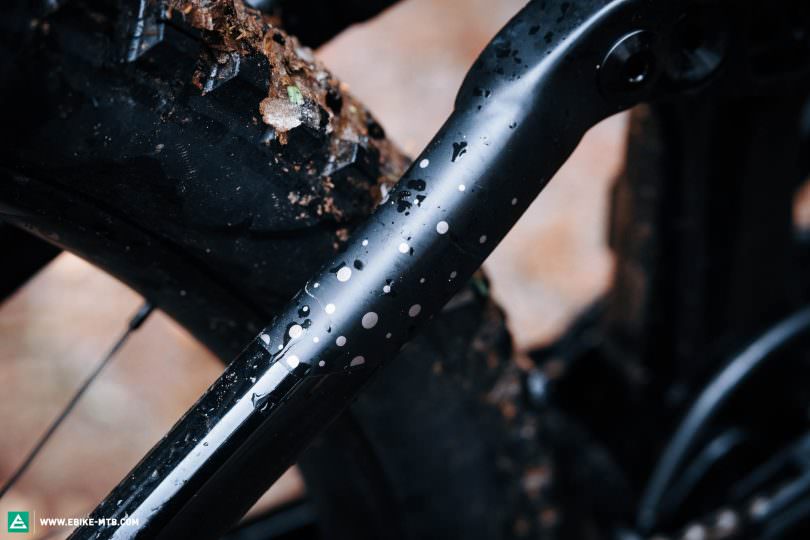
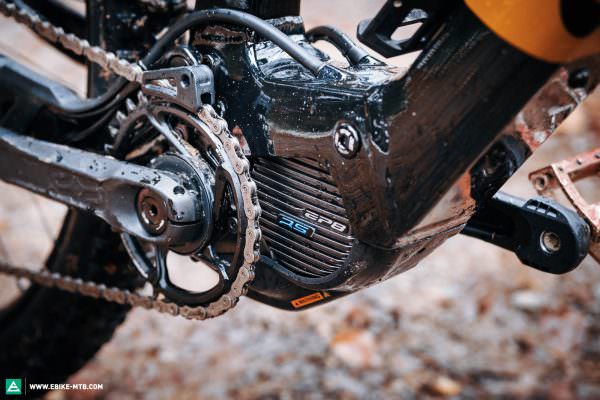
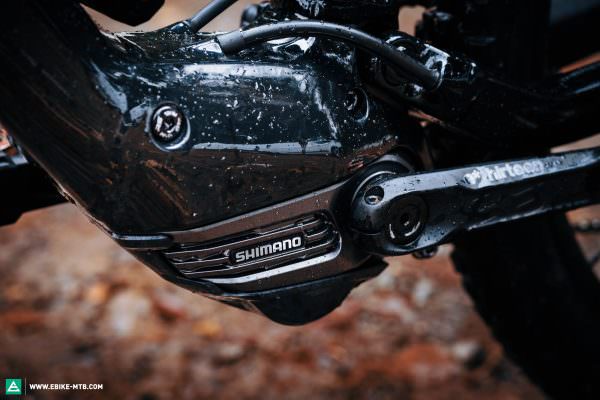
Less power and more battery capacity – The Shimano EP8 RS motor system of the Orbea Rise H 2022
The Orbea Rise H doesn’t fit neatly into existing eMTB categories. At 20.26 kg, it’s not super light but despite its trail-oriented features, it’s not heavy either. It crosses the border between Light eMTBs and classic all-rounder eMTBs. The battery capacity of 540 Wh is higher than most Light eMTBs and the Shimano EP8 RS motor provides noticeably more grunt than a Specialized SL 1.1 or FAZUA motor. With a 252 Wh range extender that weighs 1.4 kg (claimed weight) and fits in the bottle cage, the Rise H has a low weight significantly under most all-round eMTBs, despite the massive battery capacity of 792 Wh.
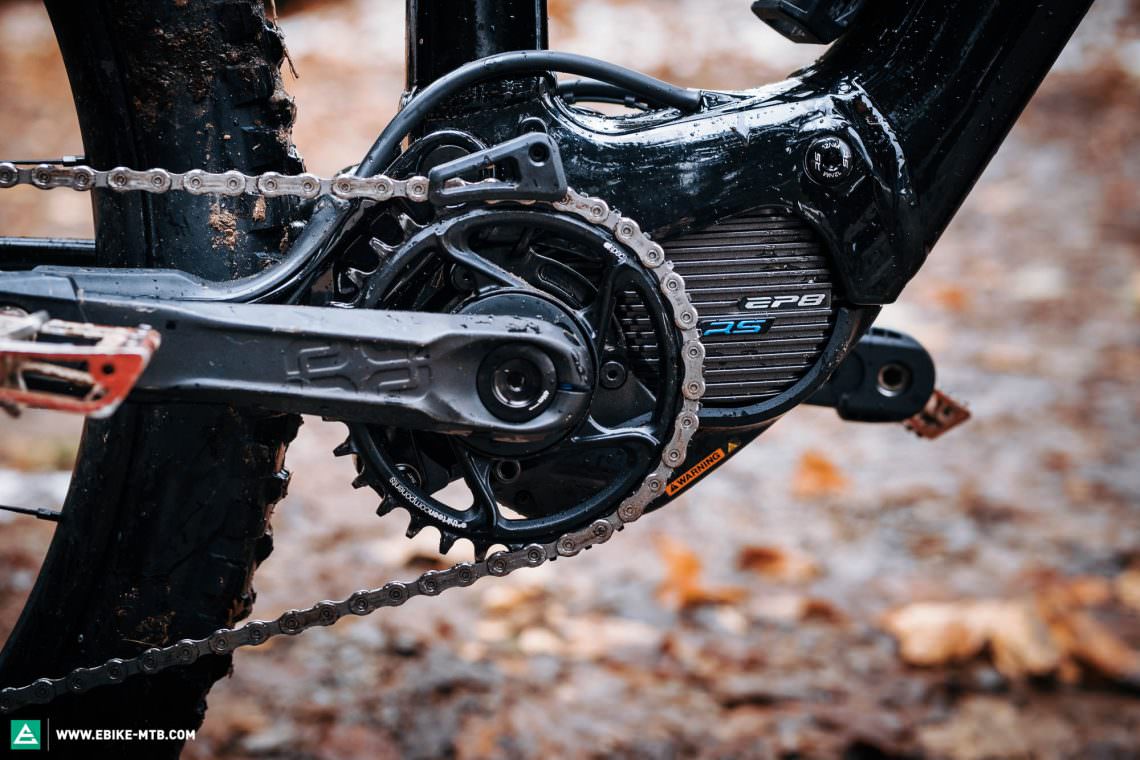
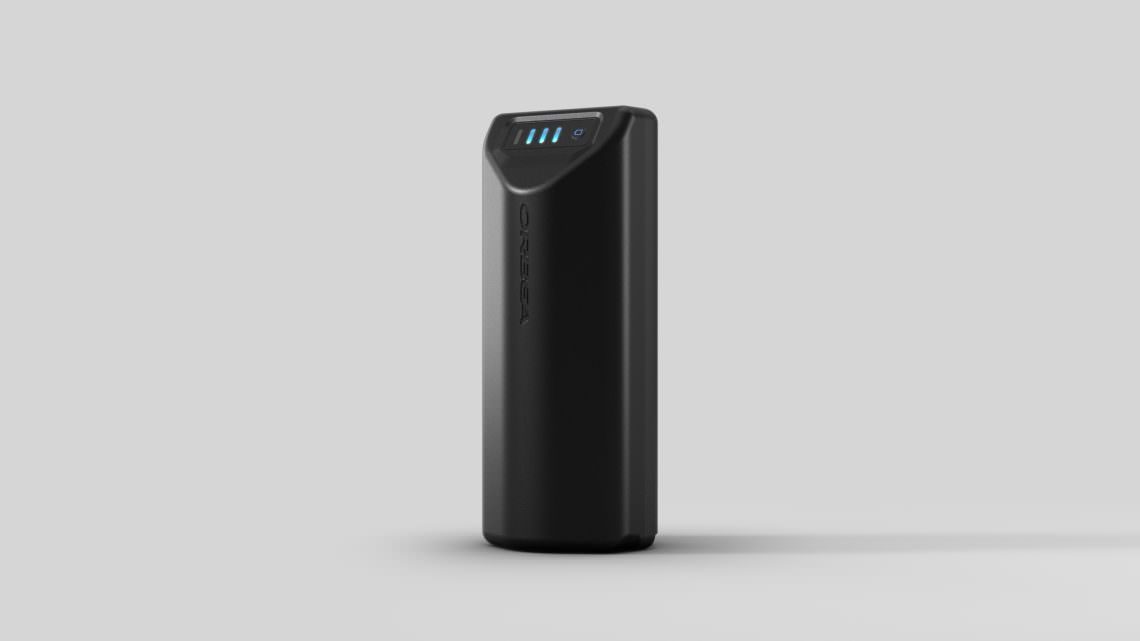
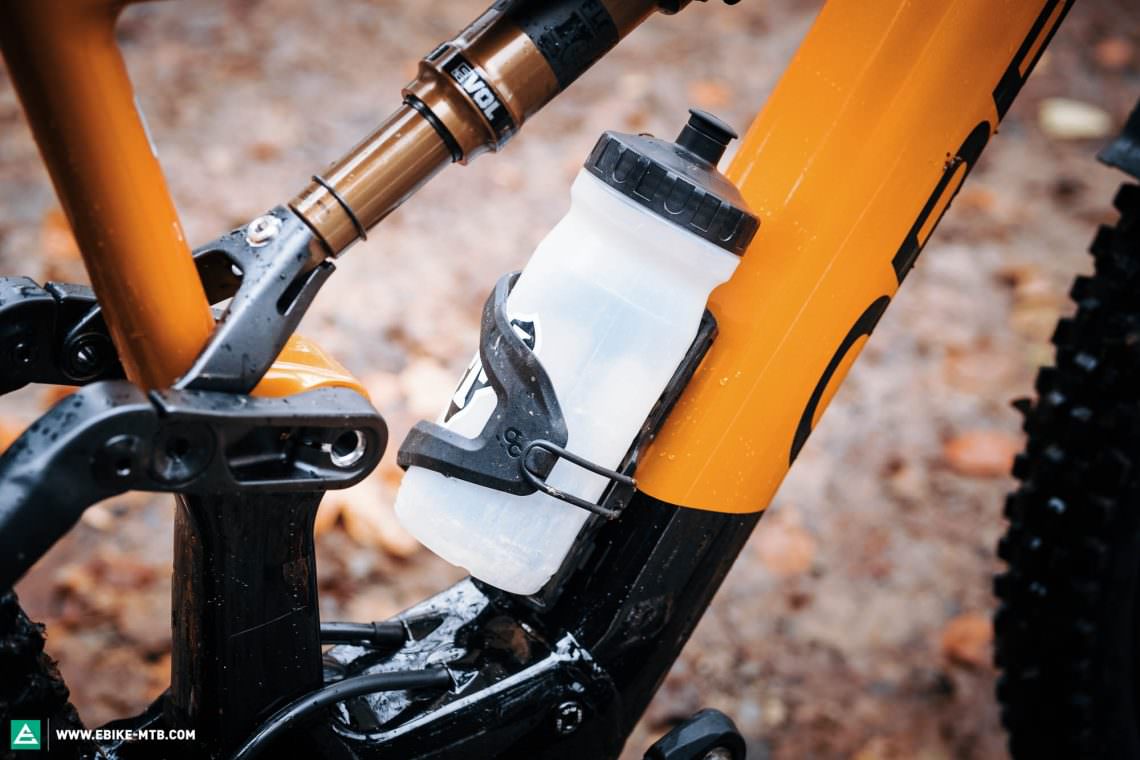
A big difference to established Light eMTBs is the Shimano EP8 RS motor. This has the exact same hardware as the normal Shimano EP8. Solely the RS sticker identifies that the software has been specifically tuned for the Rise and the maximum torque throttled down from 85 to 60 Nm. This should give the bike a particularly sporty and natural-feeling ride. If that leaves you thinking the Rise will be a struggle to get uphill, you’re wrong! Despite the reduced torque, the EP8 RS delivers enough power at high cadences that it can easily keep up with the standard Shimano motor. Indeed, it can also keep up with current Bosch motors and it easily outperforms a Specialized SL 1.1 on climbs. On the other hand, the reduction in torque is most noticeable on very steep ramps and when setting off or accelerating, where the EP8 RS requires a lot of pressure on the pedals. This not only makes its handling feel more natural and sporty but also saves battery power.
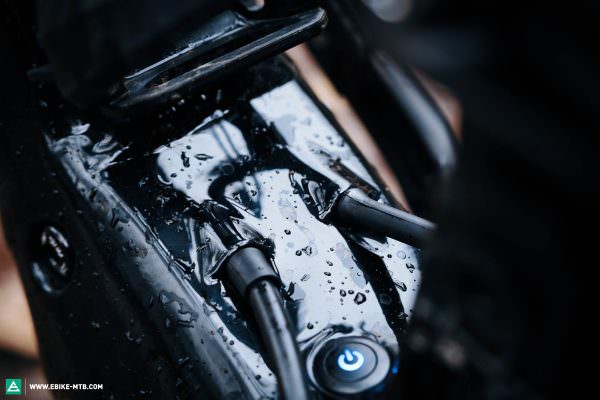
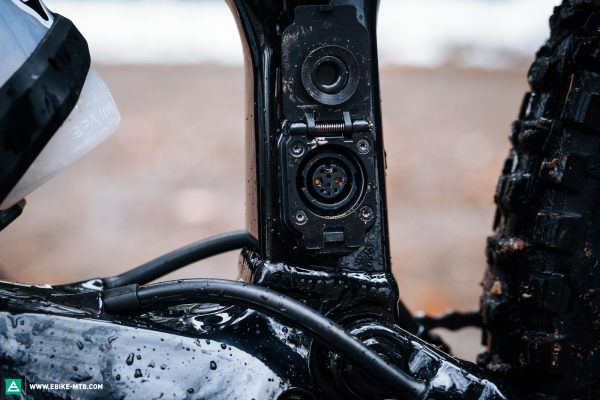
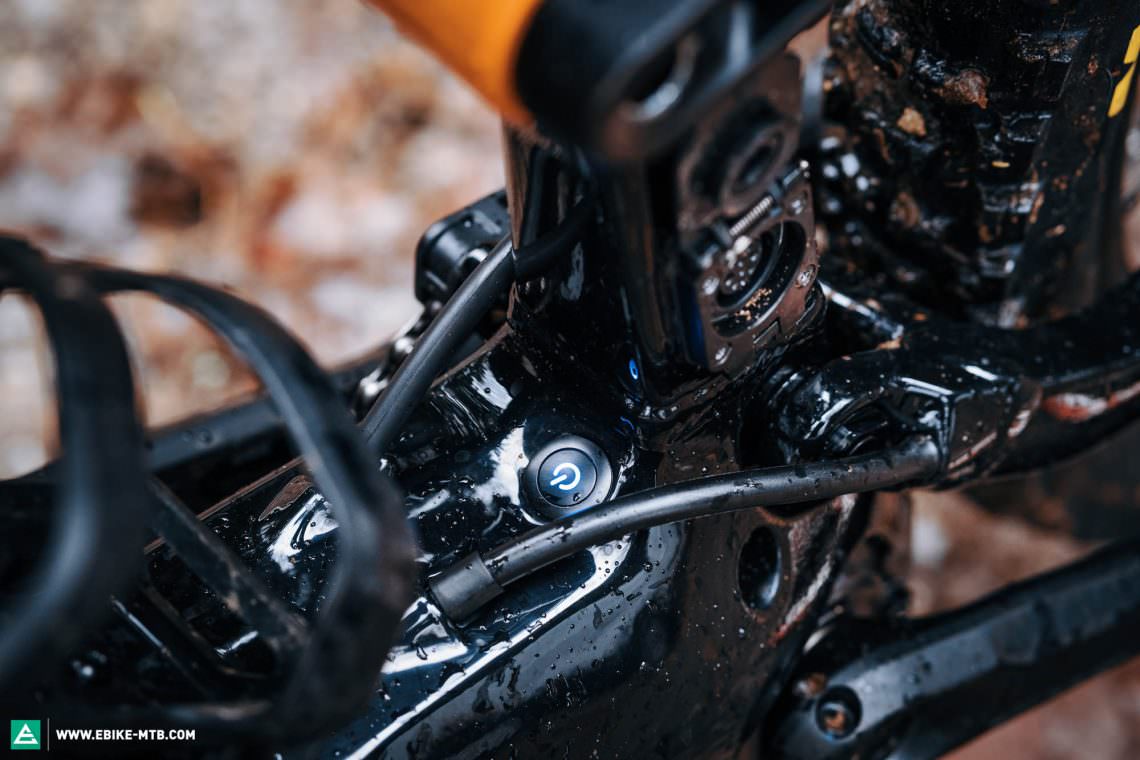
In order to fit a 540 Wh battery in the Rise H, the electronics, wiring and bracket for the Range Extender have been rethought compared to the carbon version. As a result, neither the faster charger of the Rise H nor its Range Extender are compatible with the carbon Rise.
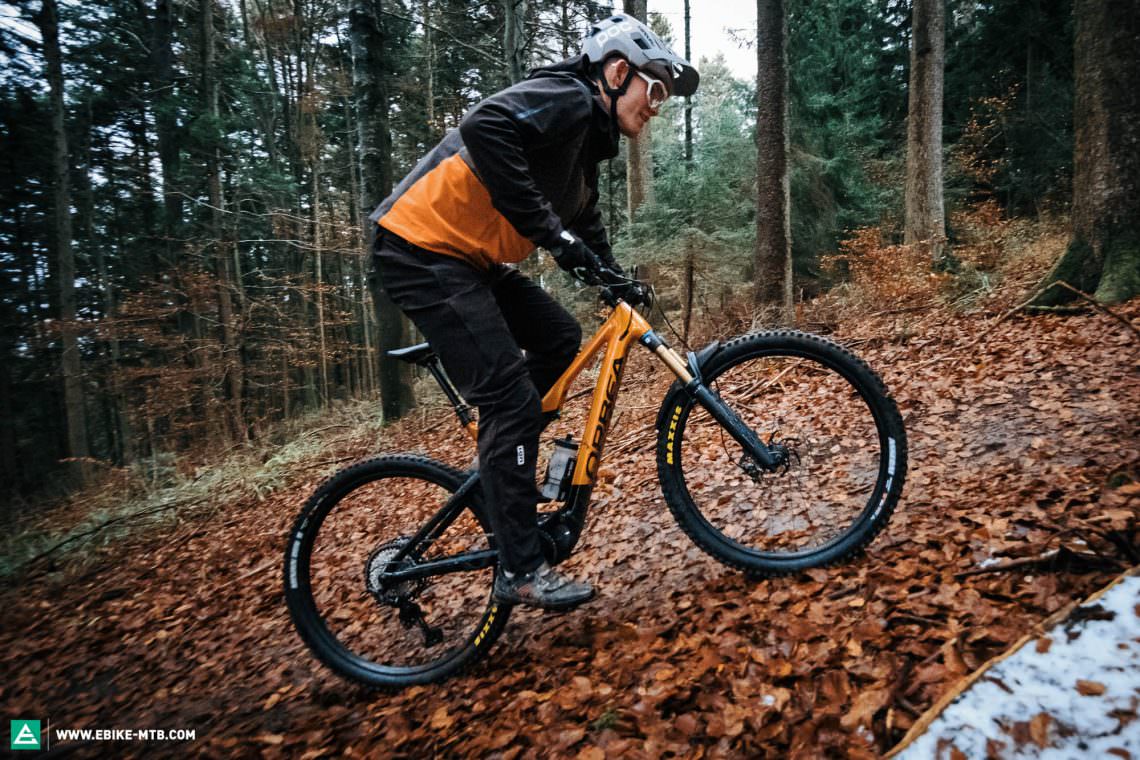
The Orbea Rise H10 2022 spec in detail – Use the configurator to get the maximum performance out of your bike
Using Orbea’s MyO configurator, you can equip your Rise H almost entirely the way it suits you and your riding style. Orbea let you choose the suspension, tires, brakes, dropper travel and display. We’ve tuned our € 7.096 Rise H for trail performance. The FOX 36 Factory GRIP2 fork has 150mm travel, while a FOX Float DPS Factory shock controls 140mm travel at the rear. Shimano XT four-piston brakes are also a better choice for trail riders than the standard two-pot items. However, the 180mm Galfer disc rotor at the rear is too small and causes the brake to overheat on long descents. You also have to pay attention to the tires, as otherwise, you’ll get the Rise H with the MAXXIS Dissector in the EXO and Rekon in the EXO+ casings. We recommend upgrading to a grippier tire combo consisting of a MAXXIS ASSEGAI up front and Minion DHR II at the rear. Both also come in the puncture-proof and robust DH casing, which lets you run very low air pressures, in turn allowing you to get the maximum performance out of the Rise H. Unfortunately there is one let down: the robust DH casing tires and optional Range Extender won’t be available until early 2022. We like the fact that you can choose the travel of the dropper post for free in the configurator.
Orbea Rise H10
€ 7,096
Specifications
Motor Shimano EP8-RS 60 Nm
Battery ORBEA RS Custom 540 Wh
Display Shimano EN100 Junction
Fork FOX 36 Factory GRIP2 150 mm
Rear Shock FOX Float DPS Factory 140 mm
Seatpost OC MC20 Mountain Control 125-170 mm
Brakes Shimano XT M8120 200/180 mm
Drivetrain XT 1x12
Stem Race Face Aeffect 50 mm
Handlebar Race Face Next R 780 mm
Wheelset Race Face TURBINE R30 29"
Tires MAXXIS ASSEGAI/Minion DHR II DH-Casing 2.5"/2.4"
Technical Data
Size S M L XL
Weight 20,8 kg
Perm. total weight 151 kg
Max. payload (rider/equipment) 130 kg
Trailer approval no
Specific Features
Range extender with 252-Wh
Configurator
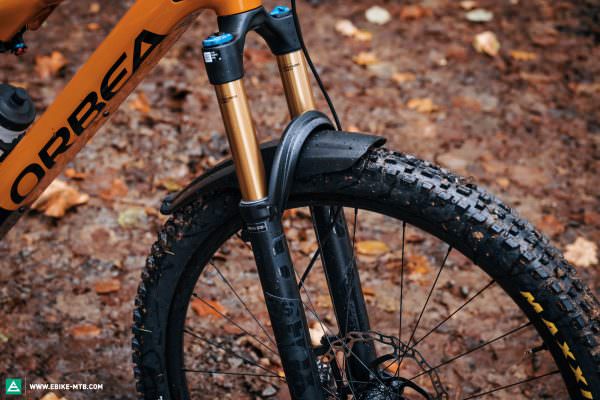
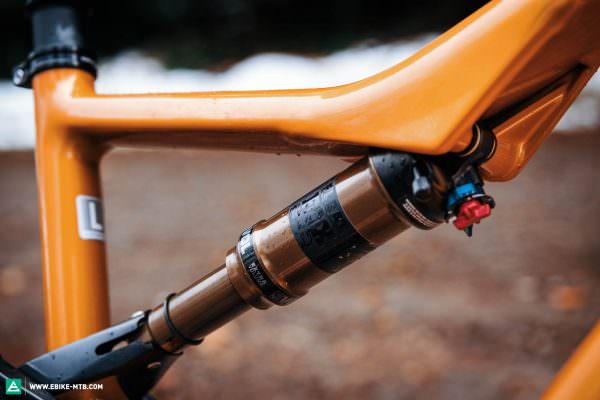
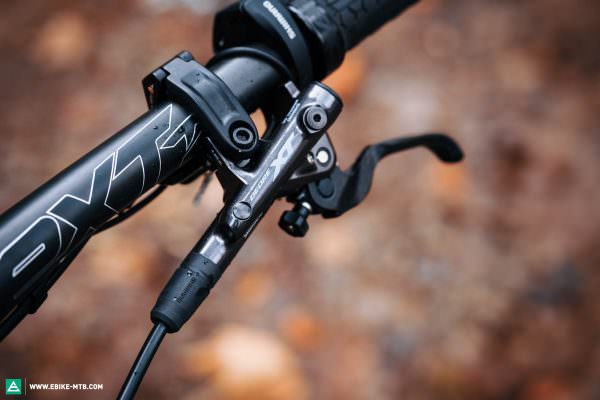
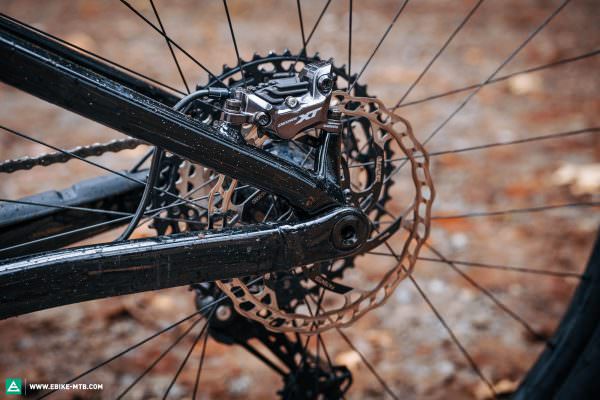
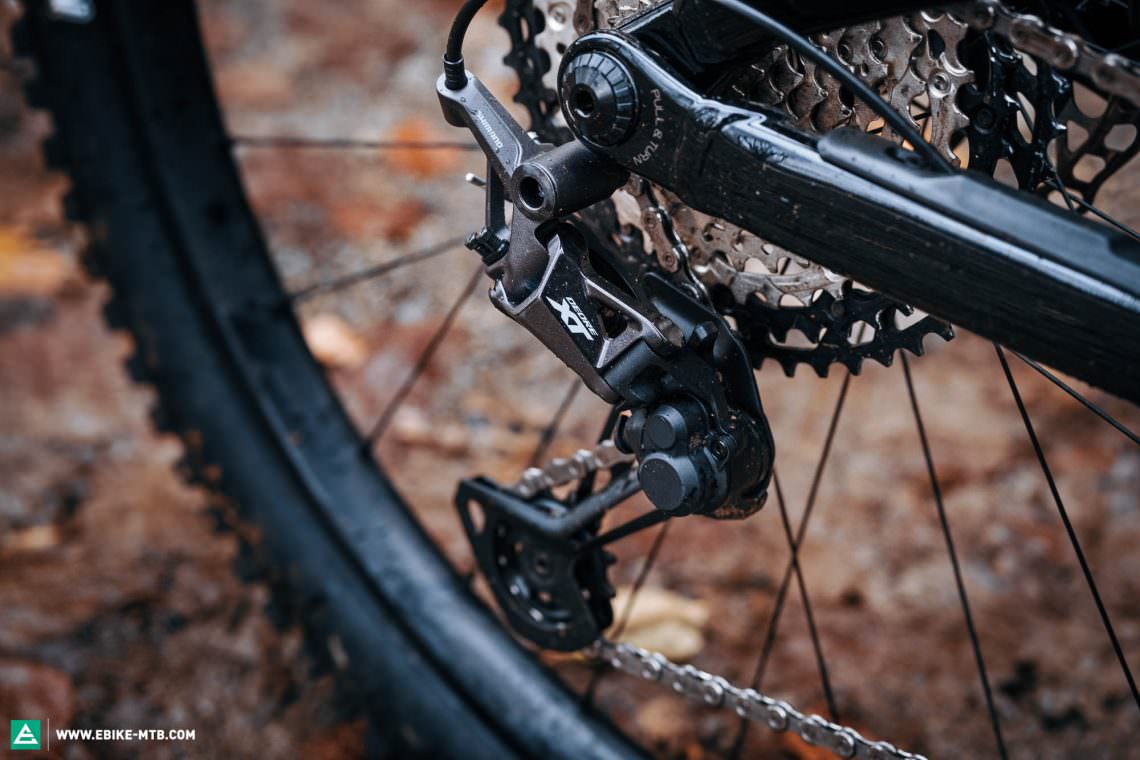

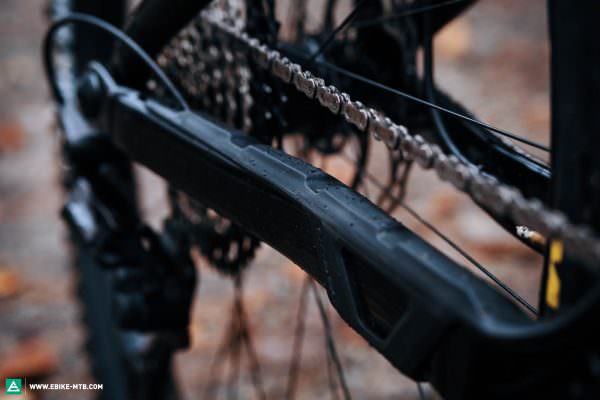

Other Orbea Rise H models
While the carbon version of the Rise can be completely personalised via the MyO configurator, the aluminium models come in just three different colours – only the components can be customised. Performance-oriented bikers and heavier riders over 85 kg should definitely opt for the FOX 36 Factory GRIP2 fork, though lighter riders will also benefit from the better performance and GRIP2 damper. Unfortunately, this option isn’t available for the entry-level H30. Regardless of your intended use and weight, you should choose the MAXXIS ASSEGAI and Minion DHR II tires in the stable DH casing. This not only helps prevent flats but lets you run lower air pressures to increase grip massively uphill and downhill. You shouldn’t forget to upgrade to four-piston brakes, which offer significantly more power than the standard two-piston brakes that are specced for every model. Having the choice of display is also nice to have as the Rise H can be ridden with or without it, allowing you to save some money if you want. If you decide against a display, the inconspicuous EW-EN100 dongle is used, which identifies the current support level via an LED and provides a Bluetooth interface to the system. The new aluminium Rise models will be available from the beginning of December. Alongside the top-end H10 which we tested here, there are two other builds available for € 5,799 and € 4,999.
Orbea Rise H15 2022

Orbea Rise H15
€ 5,799
Specifications
Motor Shimano EP8-RS 60 Nm
Battery ORBEA RS Custom 540 Wh
Display Shimano E7000
Fork FOX 36 Performance GRIP 150 mm
Rear Shock FOX Float X Performance 140 mm
Seatpost OC MC20 Mountain Control 125-170 mm
Brakes Shimano MT 6100 200/180 mm
Drivetrain SLX/XT 1x12
Stem Race Face Aeffect 35 mm
Handlebar Race Face Next R 780 mm
Wheelset Race Face AR 30c 29"
Tires MAXXIS DISSECTOR/RECON EXO 2.4"
Technical Data
Size S M L XL
Perm. total weight 151 kg
Max. payload (rider/equipment) 130 kg
Trailer approval no
Specific Features
Range extender with 252-Wh
Configurator
Orbea Rise H30 2022
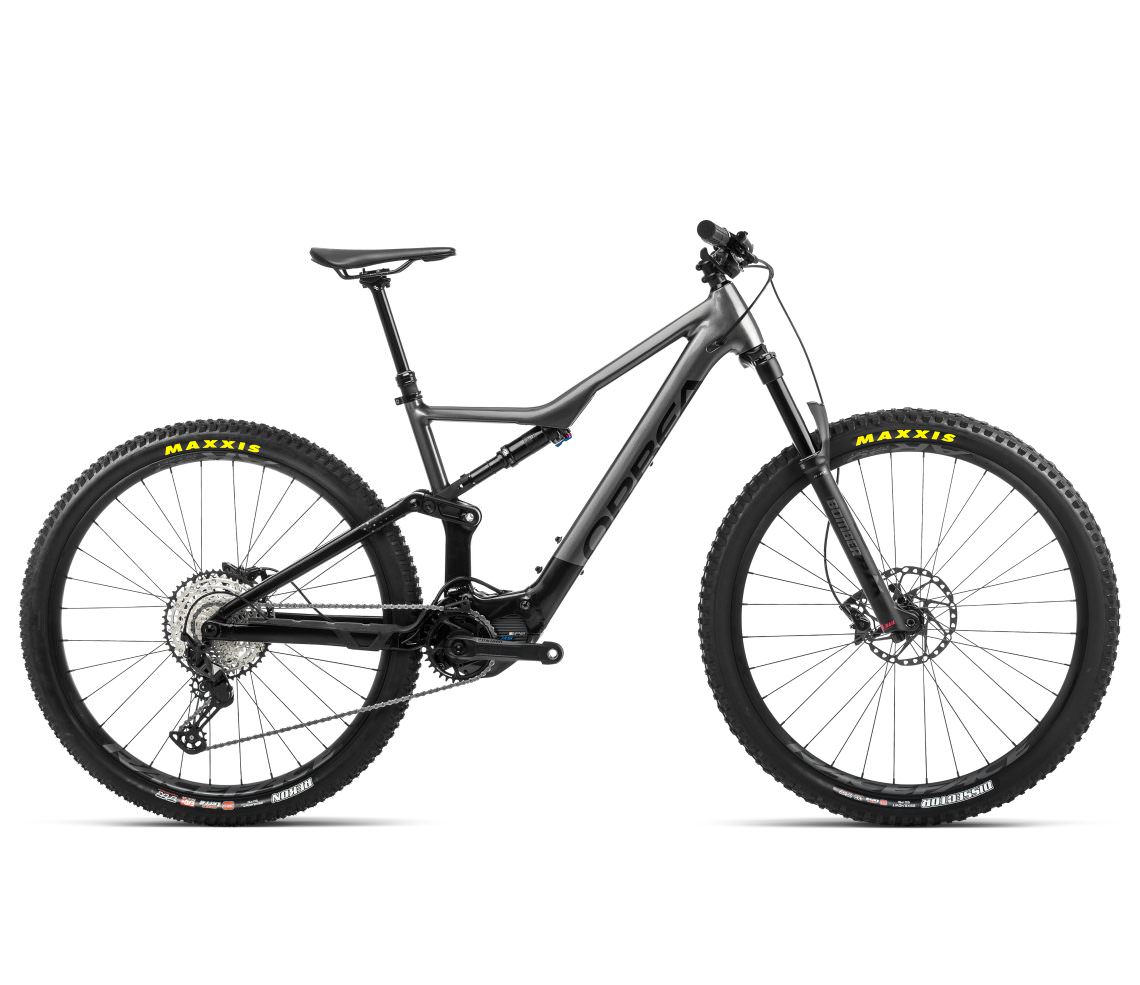
Orbea Rise H30
€ 4,999
Specifications
Motor Shimano EP8-RS 60 Nm
Battery ORBEA RS Custom 540 Wh
Display Shimano E7000
Fork Marzocchi Bomber Z2 140 mm
Rear Shock FOX Float DPS Performance 140 mm
Seatpost OC MC20 Mountain Control 125-150 mm
Brakes Shimano MT410 200/180 mm
Drivetrain SLX/Deore M6100 1x12
Stem Race Face Aeffect 35 mm
Handlebar Race Face Next R 780 mm
Wheelset Race Face AR 30c 29"
Tires MAXXIS DISSECTOR/RECON EXO 2.4"
Technical Data
Size S M L XL
Perm. total weight 151 kg
Max. payload (rider/equipment) 130 kg
Trailer approval no
Specific Features
Range extender with 252-Wh
Configurator
Orbea Rise H 2022 availability – Now!
Orbea have delivered some bikes to dealers before the official release of the new Orbea Rise H 2022. You can also order your Rise H now in Orbea’s online shop. Hurry though, because due to supply issues, stocks are limited. Unfortunately, the optional Range Extender as well as the MAXXIS tires with DH casings won’t be available until the beginning of 2022.
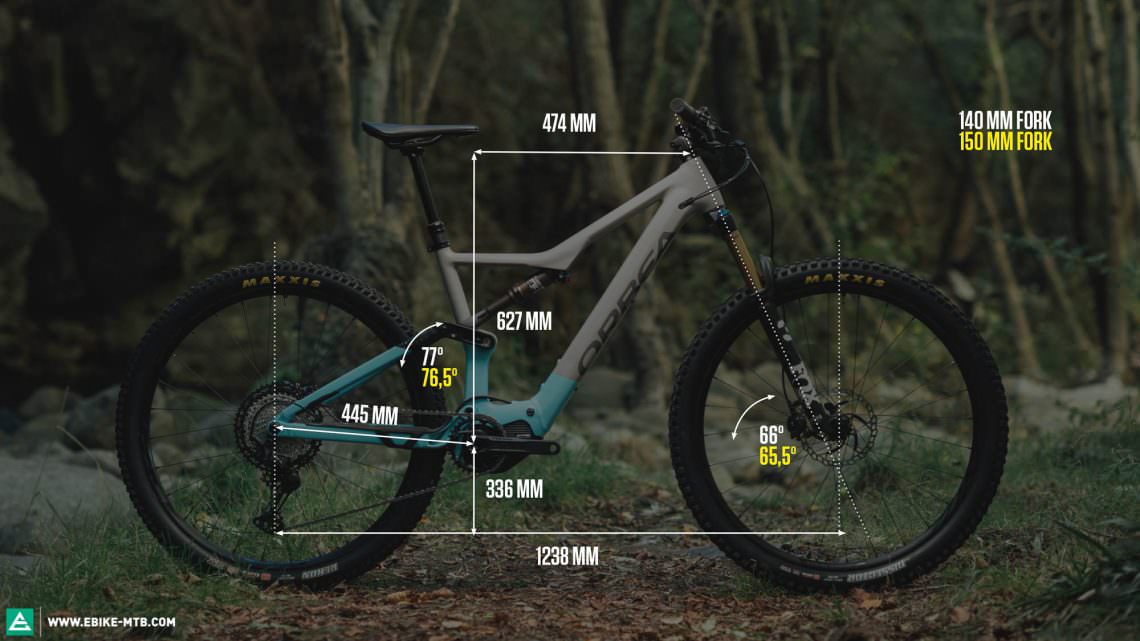
The geometry of the Orbea Rise H
The Orbea Rise H doesn’t just look similar to the carbon Rise, Orbea have transferred the geometry concept to the aluminium sibling too. The 65.5° head angle and 474 mm reach in size L are exactly the same as the carbon Rise. The seat angle of 76.5° is pleasantly steep and positions the rider centrally on the bike, nor does the effective angle slacken significantly as the seat post is extended. The 457 mm long seat tube isn’t short by modern standards, but the good insertion depth still allows droppers with up to 170 mm travel. Make sure to choose the most dropper travel you can in the configurator. The 150 mm travel of the model on our test bike is too little and unnecessarily restricts freedom of movement downhill. With four sizes available, there should be a suitable Rise H for everyone from 150 cm to 198 cm tall.
| Size | S | M | L | XL |
|---|---|---|---|---|
| Top tube | 565 mm | 592 mm | 619 mm | 649 mm |
| Seat tube | 381 mm | 419 mm | 457 mm | 508 mm |
| Head tube | 95 mm | 105 mm | 120 mm | 140 mm |
| Head angle | 66°/65.5° | 66°/65.5° | 66°/65.5° | 66°/65.5° |
| Seat angle | 77°/76.5° | 77°/76.5° | 77°/76.5° | 77°/76.5° |
| Chainstay | 445 mm | 445 mm | 445 mm | 445 mm |
| BB Height | 336 mm | 336 mm | 336 mm | 336 mm |
| Wheelbase | 1.180 mm | 1.205 mm | 1.229 mm | 1.255 mm |
| Reach | 425 mm | 450 mm | 474 mm | 500 mm |
| Stack | 604 mm | 613 mm | 627 mm | 646 mm |
How the Orbea Rise H rides on the trail
Uphill, the Rise is closer to an all-round eMTB. On forest trails, the Rise easily keeps up with the all-rounders in the Bosch league when riding at high cadences. Likewise, touring with bikes equipped with conventional Shimano motors or the current Bosch system is no problem, as long as you’re willing to put in a little more effort than everyone else in the group on steep ramps. On uphill trails, the handling of the EP8 RS motor convinces with a very natural feel and great modulation. The low weight, slack seat tube angle that positions you centrally on the bike and sturdy rear tire that can be ridden at low air pressures, all combine to make the Rise a good climber. However, when accelerating over edges, steps and obstacles, the Orbea Rise H lacks some punchiness compared to all-round eMTBs. However, apply finesse rather than brute force to technical challenges and you’ll be able to climb almost anything.
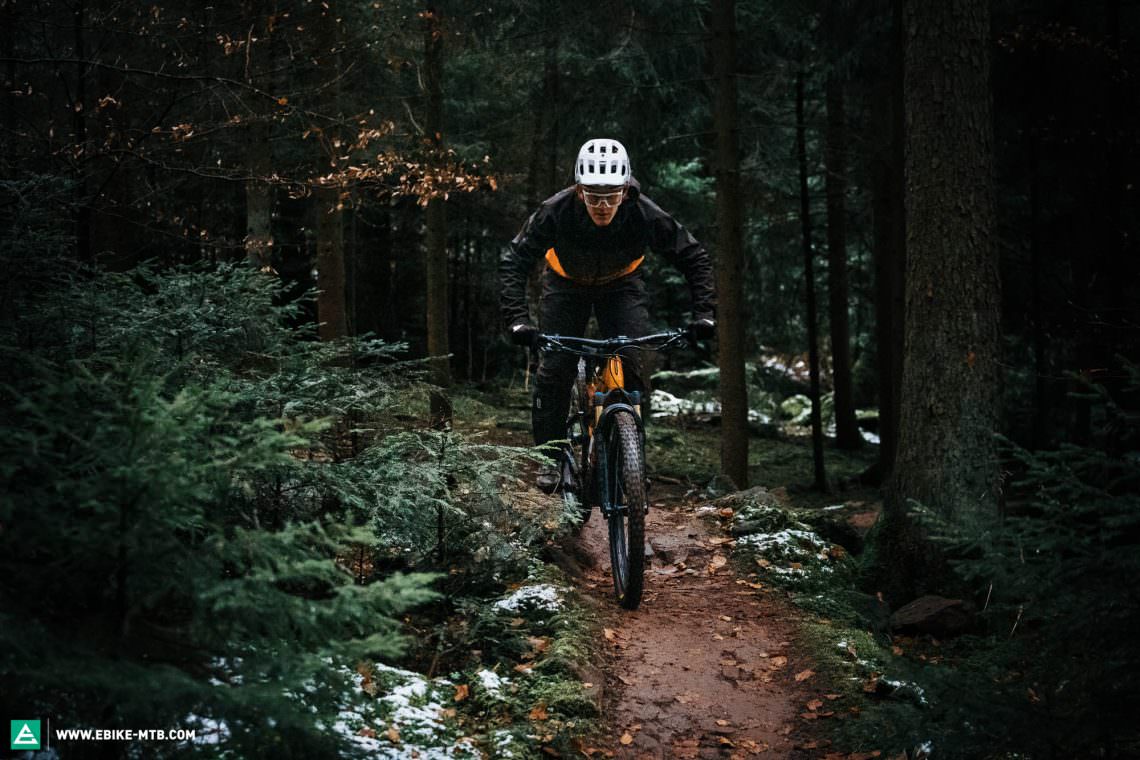
When it comes to the downhills, the Rise H clearly plays with the Light eMTBs. With its 20.8 kg weight, it might not be a flyweight but relative to its battery capacity, it still has a low overall weight. This has a positive impact in combination with the balanced weight distribution on the trail. Together with the capable geometry, great suspension and agile, playful character, the Orbea Rise H has the typical feel embodied by Light eMTBs. In other words, plenty of riding fun. As the rider, you are well integrated with the bike and always remain in full control. In open corners, the grip from both tires is high and the handling intuitive and good-natured. The relatively long stem ensures a good position on the bike, particularly for beginners, and helps to maintain pressure and thus grip on the front tire. Experienced riders who want to get maximum fun and agility out of their bike should opt for a shorter stem.
The Orbea Rise H blurs the lines between eMTB categories. A low weight paired with a modular battery concept of up to 792 Wh doesn’t permit obvious classification on paper. The trail decides.

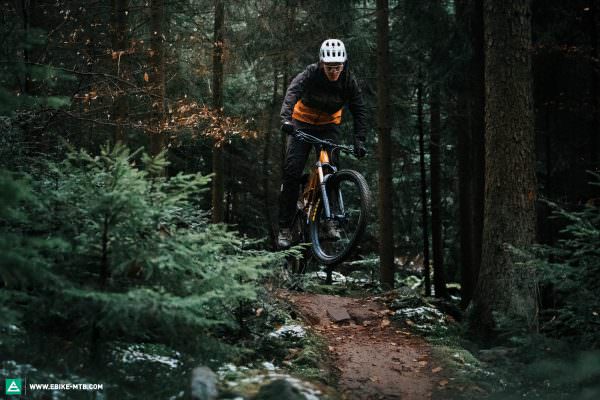

Tuning tips: select long dropper post with 170 mm stroke and four-piston brakes in the configurator |
200 mm brake disc at the rear (unfortunately not available as an option in the MyO configurator)
Thanks to its high agility and the sporty, stiff suspension that offers lots of support and pop, playing and jumping around on flow trails are the Rise H’s main showpiece. Despite a stiff, taut setup, the bike doesn’t lack traction or reserves. Quite the opposite. The Orbea Rise H encourages you to blast down the trail at high speeds. During our testing, the Rise H was criticised for the limited 150 mm travel of its dropper post. This unnecessarily restricts freedom of movement downhill and reduces the feeling of safety in steep terrain. You should definitely choose the longer 170 mm stroke dropper from the configurator. Like all Shimano EP8 motors, the motor rattles on the downhills.

Aluminium or carbon, it’s your choice – Our Orbea Rise buying guide
Do you want to buy a Rise? Then the big question is, aluminium or carbon? If you’re looking for input on the different frame materials, you’ll find everything you need to know in our carbon myths article at our sister magazine ENDURO. That said, when buying a Rise, it’s less about the material itself and more about the type of rider, because the main differences are the battery concept and the overall weight. While the carbon model uses a 360 Wh internal battery, the aluminium Rise H uses a 540 Wh battery. Since the geometry and suspension hardly differ between the two bikes, the weight and size of the battery has a significant influence on performance on the trail and touring suitability. If money is less of an issue or if super playful and agile handling, as well as the best performance on the trail is most important to you, you should take a closer look at the carbon Orbea Rise. Here, you have several models and configurations to choose from and can also determine the colour of the bike yourself in the MyO configurator. If you are looking for a bike that is suitable for touring and has a long range, the aluminium Rise H with its larger battery capacity has the edge. The aluminium models are also more competitively priced, starting at € 4,999, while the carbon version starts at € 6,299.
The Orbea Rise blurs the lines between all-round eMTBs and Light eMTBs. With its sophisticated modular battery concept and custom in-house motor software for the Shimano EP8 motor, it combines enormous range with uphill characteristics that are typical of all-round eMTBs. Nonetheless, downhill it is clearly a Light eMTB thanks to its agile handling and riding fun. Whether you are an experienced (E)-mountain biker or a beginner, everyone should take a closer look at the Rise H.
Tops
- suspension with pop, support and reserves
- clever overall concept with modular battery system
- price-performance ratio
Flops
- limited MyO configurator
- two-piston brakes as standard
- Range Extender and DH casing tires not available until 2022
For further info visit orbea.com.
Did you enjoy this article? If so, we would be stoked if you decide to support us with a monthly contribution. By becoming a supporter of E-MOUNTAINBIKE, you will help secure a sustainable future for high-quality cycling journalism. Click here to learn more.
Words: Photos: Thomas Weiss









